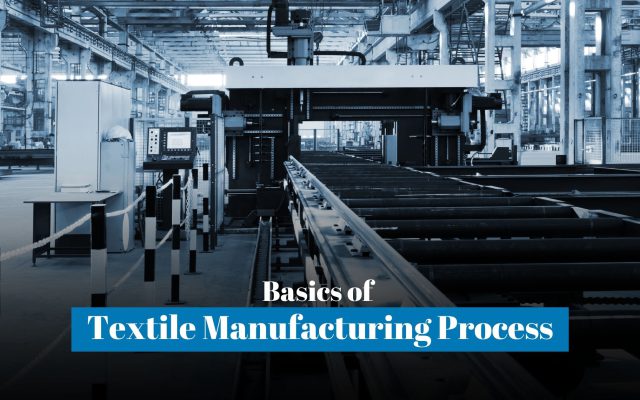The textile industry is a complex network, including weaving and spinning mills, printing factories, dyeing units, and finishing facilities, each integral to transforming fibers into fabrics or garments. This industry involves both technical and non-technical processes, making risk analysis and mitigation crucial for optimal mill management. By identifying and addressing potential issues and challenges within these units, you can effectively reduce production downtime, minimize waste, and ensure consistent yarn quality for suppliers that buy cotton yarn online through TEXchange.
Understanding the potential hazards in your spinning or weaving operations and knowing how to mitigate them is essential for success. Let’s explore these factors from a broader perspective to ensure you are well-prepared for any challenges that may arise.
Common Safety Hazards in Spinning Units of Textile Industry
Problems During Handling Compressed Bales in Warehouses
A single bale of cotton can weigh approximately 250 kg, and improper handling can lead to its falling, especially if stacking is not done correctly or equilibrium is not maintained. This not only poses a risk of physical injury to your staff but can also lead to potential accidents in the warehouse. Forklifts are commonly used for moving and stacking cotton bales, but they come with their own set of risks, such as machinery failure or restricted movement.
While these risks may seem significant, they can be effectively managed by automating and optimizing bale-handling processes and forklift operations in your warehouse. Ensuring that a Quality Control officer is present to double-check each stack can help prevent accidents. If a QC officer is not available, it is crucial to train your workers thoroughly in proper handling techniques. Additionally, regular maintenance of forklifts and other machinery is essential, including proper wiring, earthing, and vigilance for any signs of malfunction, such as sparks or smoke.
Meanwhile, if you are looking for cotton fabric online suppliers, register your account with TEXchange Global.
Problems While Mixing Cotton Bales in the Blowroom in Textile Industry
During the mixing stage, cotton bales are opened and processed in the blowroom, which features a variety of machinery, including shafts, belts, gears, pulleys, and rotating components. Even a single malfunction in any of these components can disrupt the entire system or result in subpar performance. For example, if a steel strap becomes loose or damaged during mixing, it can cause the cotton bale to open unexpectedly, creating a safety hazard. Similarly, issues can arise when removing dust from beneath the beaters.
To mitigate these risks and ensure safe operation in the blowroom, it is crucial to properly enclose all machinery when it is not in use. Additionally, workers should be diligent about interlocking all transmission machinery to prevent accidents and maintain optimal performance. You may also want to enable emergency stopping and shifting.
Problems During Carding and Combing Process in Textile Industry
Machines, even the most advanced, come without guarantees and can malfunction due to various reasons, such as faulty electrical wiring. A frequent risk during the carding and combing stages is the failure of the carding machine or its components. For example, if the interlock guard on the cylinder is not properly maintained, it can pose serious physical hazards to workers. Other potential issues include unguarded transmission parts, neglected gear inspections, and inadequate maintenance of the licker-in system.
To prevent these problems Textile Industry, ensure that the cylinder door, also known as the stripping door, is thoroughly checked to avoid risks of accidental openings while the cylinder is operating. All machinery components, including the licker-in panels, should undergo regular inspections. It is essential to secure interlockings properly and ensure that the clearance gauge between the flat cylinder and the licker-in components is correctly installed, examined, and maintained.
Problems in Framing (Draw, Speed, and Ring)
In textile manufacturing, ring, speed, and draw frames are key pieces in yarn manufacturing machinery. Here are the problems that spinners can face in framing and their possible solutions:
Draw Frame
1.Mechanical Issues:
- Jamming of Calendar Rollers: Rollers can get stuck, creating problems in the flow of fiber.
- Head Stock Gear Glitches: Problems with the gears can affect the machine’s functionality.
- Interlocking Issues: Malfunctions in the interlocking setup can compromise safety and performance.
2.Safety Hazards:
- Unexpected Flyer Hits: During fluff removal, flyers can hit operators unexpectedly, causing injuries.
- Complications from Poor Maintenance: Neglecting the maintenance of pinions or lifter racks can lead to operational problems.
Solutions:
Calendar rollers must be regularly cleaned and maintained to prevent jamming. We must also ensure that the headstock gears and interlocking systems are functioning correctly and are well-maintained. Workers must carefully interlock the flyer rotating zone to prevent accidental contact, guard gears in the recommended manner, implement fencing around gears in the speed frame machine, clean the equipment to minimize roller jamming, and ensure proper twisting of slivers to maintain yarn quality and smooth operation of rock lifting and falling.
Ring Frame
Safety Risks:
- Sharp Bobbin Edges: Accidental contact with sharp bobbin edges can cause injuries.
- Broken-End Piecing Issues: Problems during the broken-end piecing process can affect productivity.
- Bobbin Falls: Sudden falls of bobbins from the creel can be hazardous.
- Improper Bobbin Handling: Incorrect handling can lead to accidents.
- Knife Accidents: Injuries can occur during fluff removal from rollers.
- Broken Spindles: Broken spindles can lead to reduced operational efficiency.
Solutions
Finger caps can protect against finger injuries, especially when handling bobbins; spindles and other machinery parts must be checked regularly for condition. In addition, workers must follow safety protocols for dust and fluff removal and ensure easy access to the bobbin holder to prevent them from stepping into dangerous areas. You may also want to handle bobbin edges with care to avoid injuries.
Speed Frame
Mechanical Issues:
- Gear Maintenance: Gears must be guarded and maintained properly.
- Roller Jamming: Rollers can get jammed, affecting the machine’s performance.
Solutions
Workers must ensure that the gears are properly guarded and maintained, clean equipment regularly to prevent roller jamming and implement fencing for gears to enhance safety.
In addition to the operational problems cited above, spinners and weavers must address other safety issues, such as how to avoid exposure to cotton dust or chemicals and how to solve ergonomic problems. We will soon discuss these challenges in detail in our next blogs.
The textile industry in India has immense growth opportunities – we offer one of the biggest platforms to buy cotton yarn online. However, safety and health measures play an important role in ensuring suppliers produce and deliver the best quality cotton fabric online. Therefore, it is essential for workers to be aware of the various occupational hazards in the industry and for manufacturers to take the necessary steps to protect their staff from critical situations.




